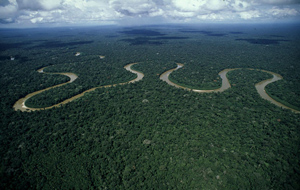Mining

Share
Related Links
Sectoral Report: Mining (April 2013)
Republic of Congo: Balancing Mining Development and Forest Conservation in the Congo Basin
Authors/Partners
World Bank Africa Region and World Bank Oil, Gas and Mining Policy Division (SEGOM).
Balancing Mining Development and Forest Conservation in the Congo Basin
CHALLENGE
Deforestation in the Congo Basin is expected to increase significantly in the future as investment in productive sectors grows. Thus, it will be essential to assist Congo Basin countries in ensuring that forestland development is planned and implemented in such a way as to avoid, minimize and/or offset unnecessary economic losses and social hardship and to draw optimal benefits from sustainable forest resource use. In 2013, the World Bank published a study on “Deforestation Trends in the Congo Basin – Reconciling Economic Growth and Forest Protection,” with support from PROFOR. One of the sectors covered by the study was the mining sector.
Early planning for the development of mineral resources, including the associated infrastructure (roads, railroads and energy, in particular) may help to reduce future impact, create development benefits at the local level, and enhance the sustainability of mining-driven development. However, land-use planning and zoning exercises in the Congo Basin so far have been centered on the forestry sector and have had limited impact on development policies in other sectors.
APPROACH
The development objective of this activity is to come up with innovative cross-sectoral methodologies and stakeholder processes that inform the decision-making process on large mining and associated infrastructure developments, enabling decision makers to reduce forest loss and the resulting negative environmental and social impacts. Activities included:
- Lessons learned from relevant initiatives; and
- Participatory land-use planning. The team conducted a land-use planning and road map exercise, and developed sector-specific recommendations for the Republic of Congo (ROC).
RESULTS
This activity led to the development of an informed process – applicable at both the national and sub-national level - for how the Government of ROC can move forward on land use planning. The activity stressed the significance of inclusive and participatory methods, as well a mechanism for settling disputes, and a process that works across sectors. The introduction of spatial analysis tools enabled government authorities to (i) develop a clearer understanding of how they can pull together information related to competing interests, such as economic development and social and environmental impacts; and (2) advance practices that can help harmonize development initiatives, even if it is not possible to resolve every conflict.
The ROC Ministry of Land Use Planning and Public Works led much of the exercise, which was also supported by the World Resources Institute. While there is still implementation work to be done, investments in the forest, agriculture and mining sectors have sought out how to incorporate the practices, tools and processes that were highlighted in this activity. There has also been greater coordination the different sectoral ministries. Results from this activity will also inform ongoing investments, including REDD+ activities under the Forest Investment Program (FIP), and were used in the preparation of the Congo Commercial Agriculture Development Project.
In addition, this activity helped to consolidate knowledge, best practices and tools on land use planning, and share them with multiple stakeholders in the Republic of Congo, including government ministries, NGOs, civil society organizations and indigenous peoples’ groups. Since participants from the Democratic Republic of Congo (DRC) are undergoing a similar process, they benefited from learning about the experience in ROC.
For stories and updates on related activities, follow us on Twitter and Facebook, or subscribe to our mailing list for regular updates.
For stories and updates on related activities, follow us on twitter and facebook , or subscribe to our mailing list for regular updates.
Author : World Bank Africa Region and World Bank Oil, Gas and Mining Policy Division (SEGOM).
Last Updated : 06-15-2024








